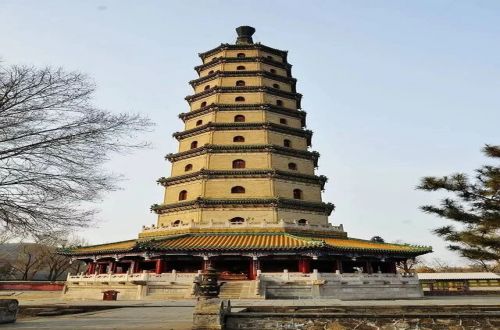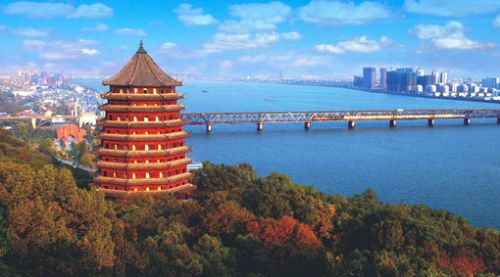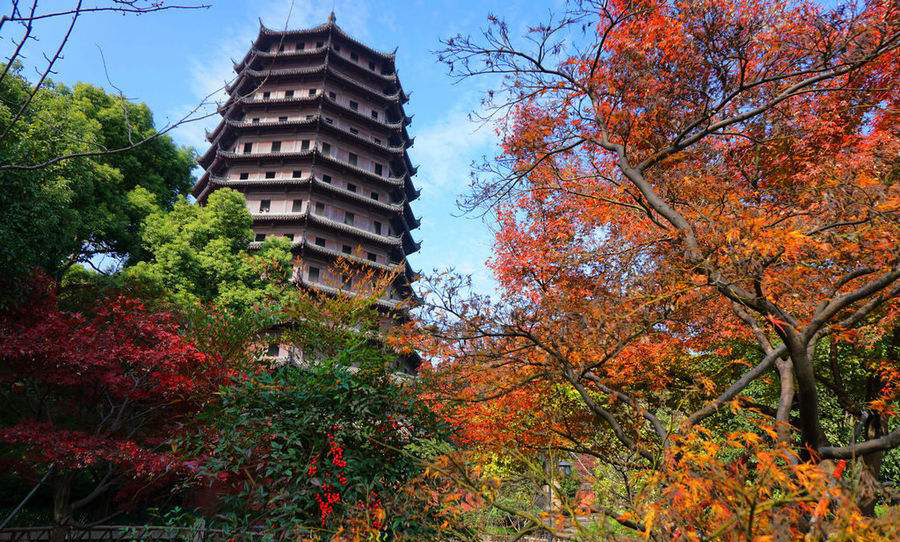Chinese Name: 六和塔 Pronunciation: liù hé tǎ
Suggested Visiting Hours: 1 Hour
Building Time: 970
Opening Hours: 07:00-17:30
Occupied Area: About 890 square meters
Best Visiting Season: Autumn(September to November)
Address: No.16 Zhijiang Road, Xihu District, Hangzhou, Zhejiang Province
Building Function: The emperor of the Northern Song Dynasty built the Six Harmonies Pagoda to suppress the tide of Qiantang River.
|
Contents
|
Tickets
|
| Admission | 20 yuan |
| Climbing the pagoda | 10 yuan |

The Six Harmonies Pagoda is named after the Buddhist meaning of "Six Harmonies and Respect". It is also known as the Liuhe Pagoda(Six Integration Pagoda), which means "the four directions of heaven and earth". Six Harmonies Pagoda covers an area of 890 square meters. There are 104 iron bells hanging on the eaves of each floor outside the tower. The height of Six Harmonies Pagoda is 59.89 meters. The inner core of the pagoda is brick and stone structure, which is divided into seven layers. The external wooden structure pavilion type eaves gallery has eight sides and thirteen floors. Each corridor has a pot door on both sides. Each floor of the pagoda is connected by spiral steps. The third Sumeru(Transliteration of Sanskrit is said to be a famous mountain in ancient Indian mythology)throne is carved with various patterns such as flowers, birds, animals, fairies and so on. The Emperor Qianlong of Qing Dynasty once wrote inscriptions on each layer of the Six Harmonies Pagoda. On March 4, 1961, Six Harmonies Pagoda was announced as the first batch of national key cultural relics protection units by the State Council of the People's Republic of China.

In 970, Qian Hongchu, the king of Wu Yue, followed the advice of two Zen masters, Yanshou and Zanning, and built a nine level pagoda here to suppress the tide of the river. In 1121, the Six Harmonies Pagoda was destroyed by flames of war.
In the 22nd year of Shaoxing in the Southern Song dynasty (1152), Six Harmonies Pagoda was changed into Kaihua Temple. In the 26th year of Shaoxing (1156), Zen master Zhitan rebuilt and changed the nine storey pagoda into the seven storey pagoda.
Take Hangzhou bus No.318, no.334, no.354, no.280, No.308, no.354, No.4 and get off at the Six Harmonies Pagoda station.
By Subway
If you start from Hangzhou Train Station, you can take Metro Line 5, and transfer to line 4 at Nanxingqiao station, then get out at exit B, then walk 261 meters to Zhakou bus stop to take bus 334, and get off at Six Harmonies Pagoda station on Zhijiang road. The whole journey takes about 45 minutes and costs 9 yuan.
If you start from the city center, you can take Metro Line 1 to Wulin Square station, and transfer to line 4 at Jinjiang station, then get out at exit B of Shuichengqiao station. Then you will walk about 260 meters to Zhakou bus stop to take bus No. 308 or 334 or 190, and get off at Six Harmonies Pagoda station on Zhijiang Road, and walk about 454 meters to the destination. It takes about 60 minutes and costs 6 yuan.
By Taxi
Chinese: 请带我去六和塔。English: Please take me to Six Harmonies Pagoda.
If you start from Xiaoshan International Airport and take a taxi to Six Harmonies Pagoda, it will take about 60 minutes and cost about 120 yuan. (You need to pay an extra 20 yuan for the expressway.)
If you start from Hangzhou Railway Station and take a taxi to Six Harmonies Pagoda, it will take about 30 minutes and cost about 30 yuan.
If you start from city center and take a taxi to Six Harmonies Pagoda, it will take about 20 minutes and cost about 35yuan.
If you start from Hangzhou South Railway Station and take a taxi to Six Harmonies Pagoda, it takes about 45 minutes and costs about 65 yuan.
